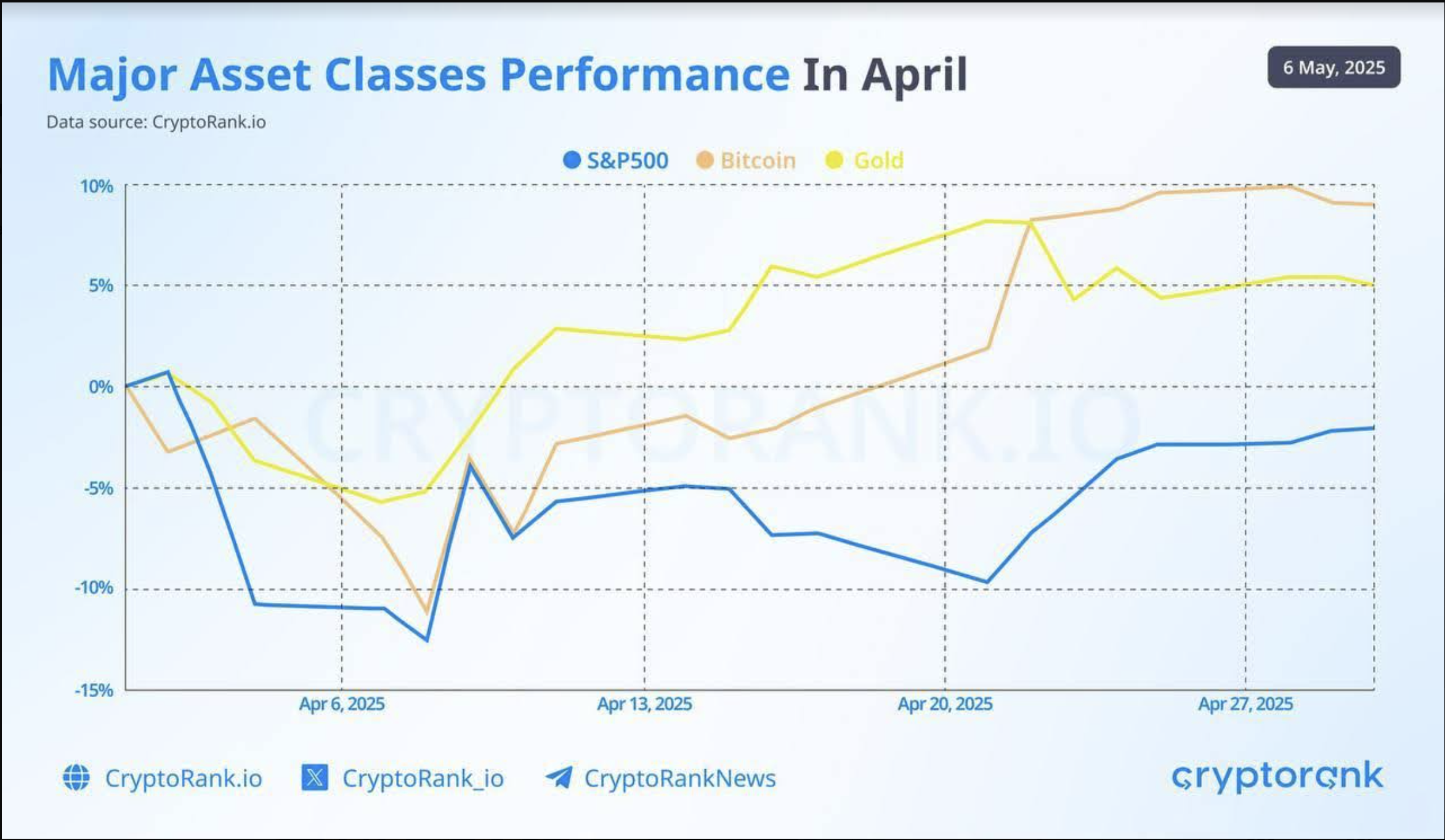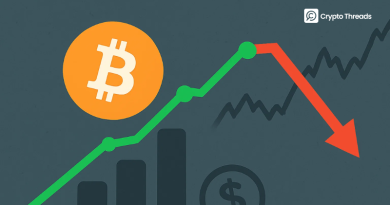Bitcoin Outperforms Traditional Assets in April: Report
In April 2025, Bitcoin demonstrated remarkable resilience and growth, significantly outperforming traditional assets like gold, the S&P 500, and the U.S. dollar. As cryptocurrency adoption continues to expand globally, Bitcoin’s impressive performance signals its increasing importance in diversified investment portfolios.
Bitcoin’s Stellar Performance Metrics

Bitcoin concluded April with a substantial 14% increase, marking its strongest April performance since 2021. This impressive gain stands in stark contrast to the performance of conventional investment vehicles:
- Bitcoin: +14%
- Gold: +0.5%
- S&P 500: -1.2%
- U.S. Dollar Index: -1.5%
Key Factors Driving Bitcoin’s Growth
Several significant factors contributed to Bitcoin’s exceptional performance in April:
1. Institutional Adoption Acceleration
Major financial institutions have continued to embrace Bitcoin, with significant investments from Wall Street firms. BlackRock’s spot Bitcoin ETF (IBIT) has been particularly influential, attracting substantial inflows throughout April. The ETF has accumulated over $1 billion in assets, reflecting growing institutional confidence in Bitcoin as a legitimate investment asset.
2. Favorable Regulatory Developments
The cryptocurrency market received positive regulatory signals in April. Several countries introduced clearer regulatory frameworks, reducing uncertainty and encouraging more institutional participation. This improved regulatory environment has bolstered investor confidence and contributed to Bitcoin’s price appreciation.
3. Technological Advancements
The Bitcoin network has seen important technological improvements, enhancing its scalability and utility. Layer-2 solutions continue to gain traction, addressing previous concerns about transaction speeds and costs. These developments have strengthened Bitcoin’s foundation as both a store of value and a practical payment system.
4. Macroeconomic Environment
Economic uncertainty and concerns about inflation have reinforced Bitcoin’s appeal as a hedge against traditional financial system risks. As central banks navigate complex monetary policies, investors increasingly view Bitcoin as a valuable diversification tool against potential currency devaluation.
Market Outlook
Analysts remain optimistic about Bitcoin’s prospects, with several key developments expected to further support its growth:
- Expanding ETF Ecosystem: Additional spot Bitcoin ETFs are anticipated to launch in various global markets, potentially bringing new waves of institutional capital.
- Corporate Treasury Adoption: More companies are likely to follow the trend of allocating portions of their treasury reserves to Bitcoin as a hedge against inflation and currency devaluation.
- Payment Integration: The integration of Bitcoin into mainstream payment systems continues to accelerate, enhancing its utility and driving broader adoption.
- Supply Dynamics: Bitcoin’s fourth halving event, which occurred earlier this year, has historically preceded significant bull runs by reducing the rate of new supply entering the market.
Investment Considerations
While Bitcoin’s recent performance is impressive, potential investors should remain mindful of several factors:
- Volatility: Despite its strong performance, Bitcoin continues to exhibit higher volatility than traditional assets.
- Regulatory Evolution: The regulatory landscape for cryptocurrencies remains in flux, with potential for both positive and negative developments.
- Technical Understanding: Investors should develop a solid understanding of blockchain technology and proper security practices before allocating significant capital.
Conclusion
Bitcoin’s outstanding performance in April 2025 reinforces its position as a compelling alternative to traditional assets. As institutional adoption increases and the technology matures, Bitcoin continues to strengthen its case as an important component of modern investment portfolios. However, investors should approach with appropriate risk management strategies, acknowledging both the opportunities and challenges presented by this evolving asset class.



